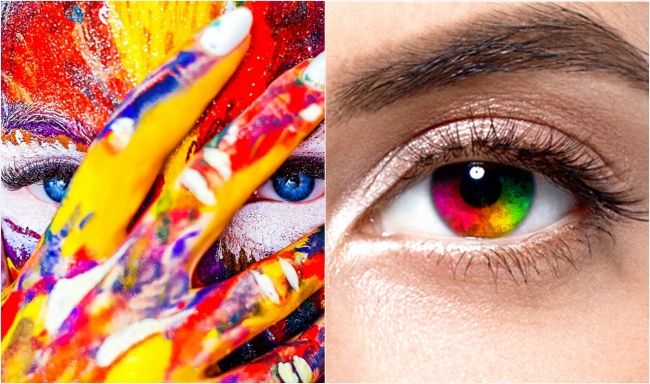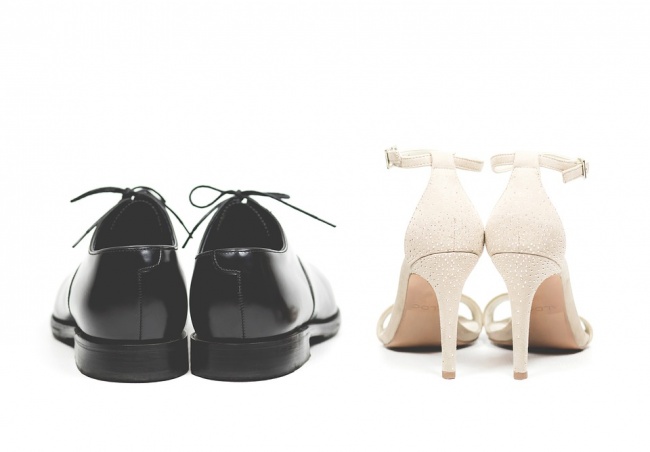Women have always fascinated scientists, historians, and the general public alike with their unique abilities and traits. While many aspects of human biology and behavior are common to all, there are intriguing differences that set women apart. In this comprehensive article, we explore 13 unusual facts about women that are totally true. These insights reveal how women see the world, manage risk, express style, and even influence historical innovations.
Let’s dive into these intriguing facts, backed by scientific research and historical evidence, and celebrate the amazing complexities of the female experience.
Interesting Facts About Women
1. Women See More Colors

Recent studies have suggested that women have a broader range of color perception compared to men. This difference is thought to be due to the presence of additional cones—the photoreceptor cells in the retina that detect color.
The Science Behind Enhanced Color Vision
- Biological Differences:
Research indicates that the female brain may process colors with greater nuance, which could explain why women often excel in tasks involving color discrimination. - Practical Applications:
This enhanced color perception may influence fields like art, design, and fashion, where the ability to discern subtle differences in hue is invaluable.
For more details on the science of color vision, visit The American Academy of Ophthalmology.
2. The Female Body Has Less Resistance To Alcohol

It is well-documented that women typically have a lower tolerance for alcohol than men. This is largely due to differences in body composition and metabolism.
Why Women Are More Sensitive to Alcohol
- Body Composition:
Women generally have a higher percentage of body fat and lower water content compared to men. Since alcohol is water-soluble, it becomes more concentrated in a woman’s bloodstream. - Enzymatic Differences:
The levels of alcohol dehydrogenase, an enzyme that helps break down alcohol, are typically lower in women. This means alcohol remains in their system longer, increasing its effects and potential harm.
For additional insights on alcohol metabolism differences, check out National Institute on Alcohol Abuse and Alcoholism.
3. Maturity is Attractive

Maturity goes far beyond age, and many find that the emotional intelligence and life experience of mature women can be incredibly attractive. This trait often leads to better decision-making and stronger relationships.
The Impact of Maturity on Attraction
- Emotional Intelligence:
Mature women are often better at understanding and managing their emotions, leading to more meaningful connections with others. - Life Experience:
With age comes a wealth of experiences that contribute to a well-rounded perspective on life, which many find appealing in both personal and professional settings.
For more on the importance of emotional intelligence in relationships, read Psychology Today’s insights on maturity and attraction.
4. The Average Woman Eats 4 Lb Of Lipstick In Her Life

It may sound bizarre, but research has shown that the average woman consumes around 4 pounds of lipstick over her lifetime. This unexpected fact highlights how everyday beauty practices can lead to the ingestion of small amounts of cosmetic products.
How Lipstick Consumption Occurs
- Transfer from Lips to Mouth:
Every time you apply or remove lipstick, tiny particles can be ingested unknowingly. - Cumulative Effects:
Over time, these small amounts add up, demonstrating how our daily habits contribute to surprising outcomes.
For more quirky beauty facts, check out Allure’s beauty statistics.
5. They Hate Taking Risks

Studies have consistently found that women are generally more risk-averse than men. This trait has implications for both personal decisions and broader societal trends.
The Science Behind Risk Aversion
- Evolutionary Perspectives:
Some theories suggest that risk aversion in women may have evolutionary roots, where minimizing risk was crucial for survival and caregiving. - Behavioral Economics:
In financial and career decisions, this cautious approach can lead to more stable, long-term outcomes, though it may also mean fewer opportunities for high-risk, high-reward ventures.
For additional research on risk-taking behavior, visit Forbes’ articles on gender and risk.
6. They Might Make Their Men Fat

Research has shown that in some relationships, men tend to gain weight over time, and one contributing factor may be the influence of their partners’ lifestyles and habits.
How Relationship Dynamics Influence Weight
- Shared Eating Habits:
Couples often adopt similar eating patterns, and if one partner indulges in frequent, high-calorie meals, the other may follow suit. - Emotional Eating:
Stress and relationship dynamics can also trigger emotional eating, contributing to weight gain. - Lifestyle Synchronization:
Partners often share sedentary habits, which can lead to a mutual decrease in physical activity and gradual weight gain over time.
For more insights on the relationship between lifestyle and weight gain, see WebMD’s relationship and health section.
7. Style Above Comfort

In many cases, women may choose style over comfort, leading to potential long-term health issues such as back pain and foot problems. High heels and tight clothing, while fashionable, can have adverse effects on posture and overall well-being.
The Impact of Fashion Choices on Health
- Posture and Back Pain:
Wearing high heels and ill-fitting clothes can alter your posture, leading to chronic back pain and discomfort. - Foot Health:
High heels, in particular, put a lot of strain on your feet, which can result in long-term issues like plantar fasciitis. - Balancing Style and Comfort:
Modern fashion trends are slowly shifting towards more comfortable and ergonomic designs, but the challenge remains for many who prioritize style above all.
For more information on balancing fashion and health, visit Healthline’s guide on footwear and posture.
8. A Heightened Sense Of Smell

Women are often noted for their heightened sense of smell, which plays a significant role in their overall sensory experience. This enhanced olfactory ability can influence everything from personal hygiene to the enjoyment of food and nature.
Why Women Have a Superior Sense of Smell
- Biological Differences:
Research suggests that the olfactory bulbs in the female brain are larger and more active, which may contribute to a more acute sense of smell. - Evolutionary Advantage:
This heightened sense of smell could have provided evolutionary benefits, such as better detection of environmental hazards or more effective selection of nutritious foods. - Practical Implications:
Women’s refined sense of smell can affect their preferences in perfumes, skincare products, and even their ability to detect subtle changes in their environment.
For further reading on gender differences in sensory perception, explore Scientific American’s articles on olfaction.
9. Brain Cells Are Denser In The Female Brain

Emerging research has indicated that women may have a higher density of brain cells than men. This neurological advantage is thought to contribute to various cognitive functions and behavioral traits that are often seen as uniquely female.
Exploring the Female Brain
- Higher Cell Density:
Studies have found that, on average, the female brain has more neurons per unit volume than the male brain. This increased density may support better multitasking, memory retention, and problem-solving skills. - Cognitive Flexibility:
The higher neuronal density is also linked to greater cognitive flexibility, allowing women to switch between tasks more efficiently and adapt to new situations quickly. - Implications for Learning and Behavior:
These neurological differences may help explain why women often excel in areas that require intricate communication and empathy.
For more detailed research on the female brain, visit PubMed’s neuroscience section.
10. They Are The Unsung Heroes Of The Inventions

Throughout history, women have played a crucial yet often underappreciated role in scientific and technological advancements. Many groundbreaking inventions and innovations have been driven by the ingenuity of women.
Recognizing Women’s Contributions
- Historical Achievements:
Despite facing significant societal barriers, women have made remarkable contributions to various fields, including medicine, engineering, and technology. Their innovative ideas have often paved the way for modern advancements. - Modern Innovations:
Today, women continue to lead and inspire in fields ranging from software development to renewable energy. Their contributions are not only valuable but essential to the progress of society. - Changing Perceptions:
Greater recognition of women’s achievements is helping to shift societal perceptions and encourage more inclusive innovation across all sectors.
For more inspiring stories of women inventors, check out National Women’s History Museum.
11. Heels Were For Men

It might come as a surprise, but high heels were originally designed for men. In the 10th century, Persian cavalry wore heels to help secure their boots while riding, and this fashion trend eventually made its way to Europe.
The Evolution of High Heels
- Historical Origins:
High heels began as practical footwear for men, enhancing their riding abilities and providing stability on horseback. Over time, this trend evolved into a fashion statement. - Gender Transition:
By the 17th century, high heels had become a symbol of status and power for both genders, but eventually, they became predominantly associated with women’s fashion. - Modern Implications:
Today, high heels are celebrated for their aesthetic appeal, yet they often come at the cost of comfort and long-term foot health. Understanding their history can offer insight into how fashion trends evolve and impact our lives.
For more on the history of high heels, visit History.com.
12. Reading Faces

Another fascinating fact about women is their exceptional ability to read faces and interpret emotions accurately. This skill plays a critical role in communication and social interaction.
The Science of Facial Recognition
- Enhanced Social Cognition:
Women often outperform men in tasks that require the recognition of subtle emotional cues. This ability is linked to both biological and social factors that shape our cognitive processing. - Impact on Relationships:
The ability to read facial expressions enhances empathy and improves communication, making women effective in building and maintaining strong interpersonal relationships. - Neurological Basis:
Studies suggest that areas of the brain associated with facial recognition, such as the fusiform gyrus, may be more active in women.
For more research on facial recognition and emotional intelligence, check out Scientific American’s coverage.
13. Long Live Women!

Perhaps the most important takeaway from these unusual facts is the celebration of women’s resilience, creativity, and unique contributions to society. Women not only possess a host of remarkable biological traits but also continuously shape the world through innovation, empathy, and leadership.
The Essence of Female Vitality
- Strength and Adaptability:
Women have a remarkable capacity to adapt to changing circumstances, thrive in challenging environments, and overcome obstacles. This resilience is a key factor in their longevity and success. - Emotional and Social Intelligence:
The ability to empathize, communicate, and build relationships is at the core of what makes women influential in both personal and professional spheres. - Ongoing Contributions:
From advancements in technology to breakthroughs in medicine, women continue to be at the forefront of innovation and progress, proving that their impact is both profound and enduring.
For more inspiring stories and research on female resilience, visit National Geographic’s features on women.
Conclusion: Celebrating the Unusual and Extraordinary
The 13 unusual facts about women we’ve explored in this article highlight the fascinating, multifaceted nature of the female experience. From enhanced color vision and superior olfactory senses to their significant contributions to innovation and their unique neurological traits, these facts not only challenge common stereotypes but also celebrate the diverse strengths that women bring to the world.
Understanding these facts offers valuable insights into how biology, history, and culture intersect to shape the modern female experience. By appreciating the unique qualities that make women extraordinary, we can foster a more inclusive and empowering perspective for future generations.
Whether you’re interested in science, history, or simply the intricacies of human behavior, these insights remind us of the importance of recognizing and celebrating the incredible diversity of the human experience. Embrace the unusual, honor the extraordinary, and let these facts inspire you to see the world—and yourself—in a whole new light.
For further reading on women’s health, neuroscience, and historical contributions, explore reputable sources such as Harvard Health Publishing and WebMD. Here’s to celebrating the vibrant, powerful, and undeniably unique spirit of women around the world!









Leave a Reply